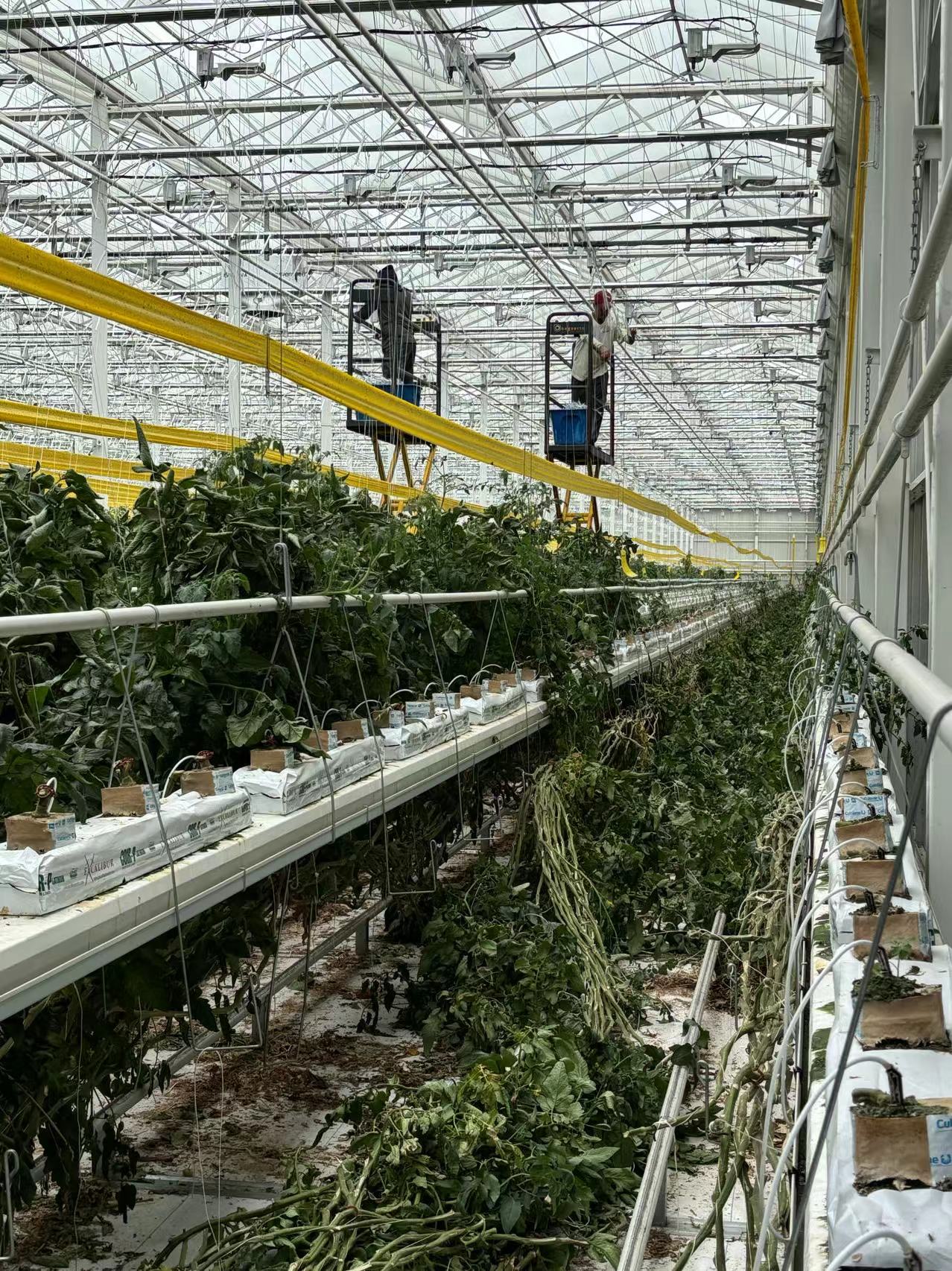The first round of planting at Vermillion Growers has been successfully completed, and site cleanup is now finished. The expansion and upgrades to the power system are also nearing completion. We are excited to announce that the new planting cycle is set to begin on October 18, with final preparations already underway as we count down to this important milestone.

The upgraded power system will greatly enhance operational efficiency by enabling more precise control of temperature and lighting—critical factors for optimizing crop growth. With these improvements, we anticipate even better yields and overall performance in the upcoming planting season. Stay tuned for further updates as we transition into this next phase.
In greenhouse crop cultivation, maintaining cleanliness and implementing proper disinfection are vital for ensuring plant health, boosting yields, and minimizing pest and disease outbreaks. This is true not only for tomatoes but for all greenhouse crops. While a greenhouse provides controlled conditions where humidity, temperature, and airflow can be managed, these same factors also create an ideal environment for the growth of pathogens, fungi, and pests. Without regular, thorough cleaning and disinfection, harmful pathogens can survive in plant debris, soil, or on surfaces, posing a risk to the next crop cycle.
After completing the first tomato growing cycle at the Vermillion greenhouse, it is crucial to apply stringent cleaning and disinfection protocols to optimize crop performance and reduce reliance on pesticides. This step will lay a strong foundation for healthier crops in the next planting phase.
Dr. Mohyuddin Mirza from the University of Alberta provides the following key recommendations for effective greenhouse disinfection:
1. Remove Crop Debris and Waste: Dr. Mirza emphasizes the importance of promptly clearing away plant debris and dead leaves. If left unchecked, these residues can harbor pathogens that affect future crops, such as Fusarium spp. and gray mold. Using a vacuum to clean debris from between heating pipes ensures thorough removal of contaminants from hard-to-reach areas.
2. Disinfect Floors and Surfaces: It is essential to thoroughly disinfect floors, walls, and greenhouse equipment to prevent pathogen accumulation. Utilize registered disinfectants proven effective against specific pathogens and that do not leave residues on crops for the next growing season. For greenhouses with virus concerns, prioritize antiviral disinfectants and ensure adequate ventilation and rest periods after chemical applications.
3. Replace Protective Materials: If the greenhouse floor is covered with plastic sheeting, consider replacing it to reduce pathogen spread. Dr. Mirza notes that white plastic sheeting is beneficial for maintaining cleanliness and minimizing disease transmission.
4. Disinfect Equipment and Tools: Beyond cleaning greenhouse surfaces, all equipment and tools-including carts, drip emitters, hose ends, and temperature sensors-require thorough disinfection. Regular disinfection of these items helps mitigate disease spread and supports overall crop health.
5. Control Air Quality: Dr. Mirza suggests using ozone for air disinfection in greenhouses, especially when no crops are present. Ozone treatment effectively reduces airborne pathogens and prevents spores from re-entering treated areas.
6. Implement Preventive Measures: Consider "solarizing" the greenhouse as a disinfection method. By closing the greenhouse and raising the temperature to above 40°C, pathogens can be effectively eradicated. During this process, ensure that sensors and irrigation equipment are removed or protected.
7. Prevent Future Sources of Infection: Dr. Mirza highlights that cull piles are significant sources of pathogens. To prevent pathogen spread, these should be placed downwind of the greenhouse or removed entirely from the site.
By adhering to these cleaning and disinfection practices, you can significantly reduce disease incidence, establish a solid foundation for healthy crop production, improve the performance of future tomato crops, and enhance economic outcomes.





